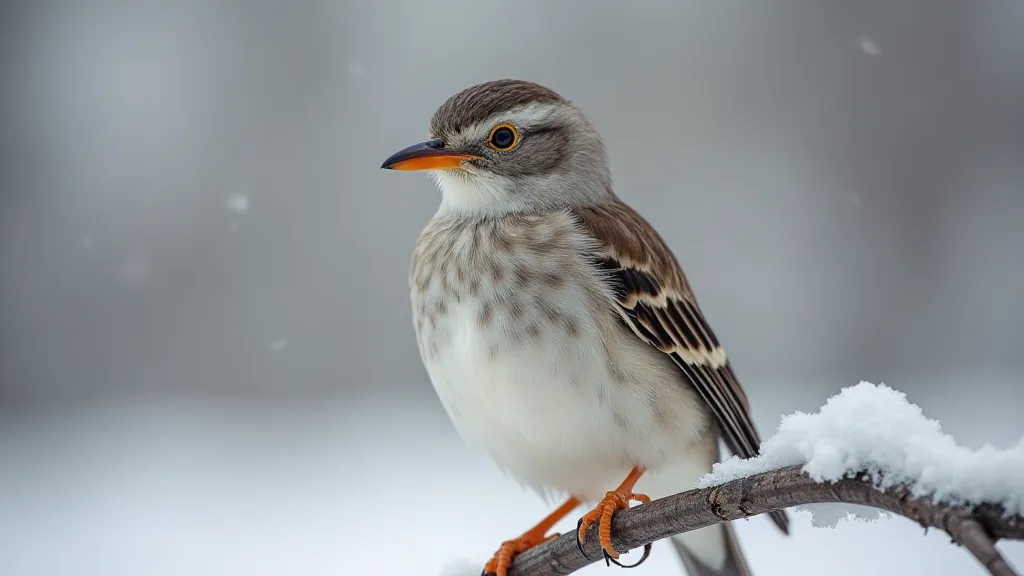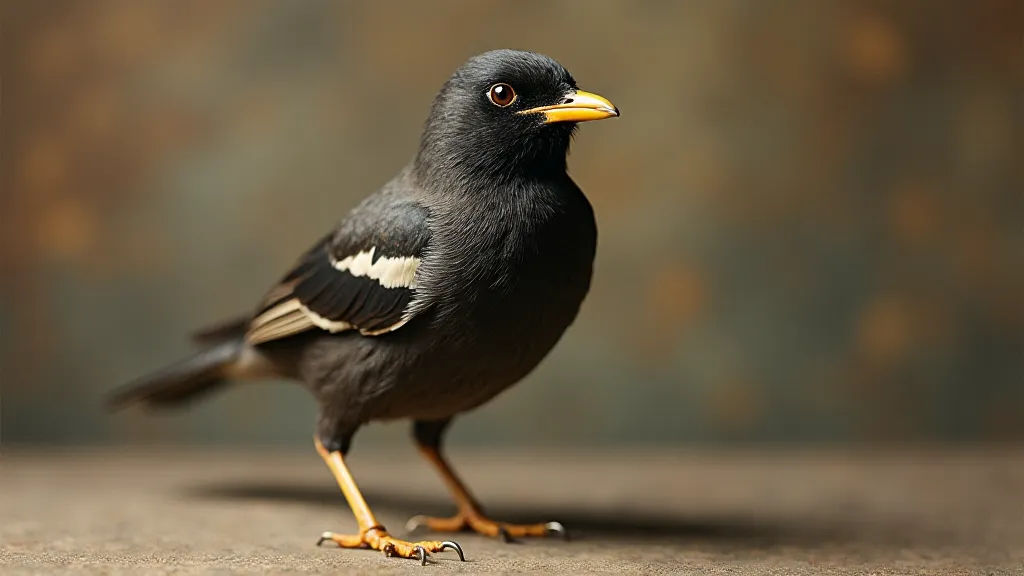Mimicry's Masquerade: Unraveling the Art of Avian Deception
The natural world, with its vibrant tapestry of life, often presents us with wonders that defy simple understanding. We marvel at the strength of a lion, the grace of a dolphin, the intricate design of a honeycomb. But sometimes, the most profound wonders lie not in brute force or obvious beauty, but in subtle deception, in a clever adaptation so remarkable it borders on artistry. And few examples of this are as fascinating as avian mimicry – the ability of some bird species to imitate the calls, songs, and even behaviors of others. It’s a performance of deception, a masquerade played out amongst the leaves and branches, and it reveals a depth of intelligence and ecological complexity that truly humbles.
Imagine standing in a dense forest, listening to a symphony of birdsong. You hear the familiar trill of a robin, the melodic warble of a thrush, and then… something unexpected. A sound that doesn's quite fit, a note that's slightly off, yet eerily familiar. Perhaps you initially misidentify it as a different species entirely. That, in essence, the power of avian mimicry.
The Masters of Disguise: Notable Mimics
While imitation can be a common behavior, true mimicry – the deliberate and consistent replication of another species’ vocalizations – is a specialized trait. The Northern Mockingbird (Mimus polyglottos) is arguably the most famous example, a veritable virtuoso of avian mimicry. These birds can incorporate the songs of dozens, even hundreds, of other species into their own repertoire, creating a complex and ever-changing vocal performance. But the phenomenon extends far beyond the mockingbird. European Starlings, Brown Thrashers, and Common Ravens are also notable mimics, each employing deception for survival in their own unique way.

The motivations behind this mimicry are as varied as the birds themselves. For some, like the mockingbird, it’s a key element in courtship displays. A male mockingbird with a wider and more impressive repertoire is often more attractive to females, signifying a strong and adaptable individual. For others, mimicry serves as a form of protection. A young bird mimicking the alarm calls of a predator can deter potential threats, even if it's not itself the species that typically produces those calls. Still others mimic the calls of other birds to deceive competitors, stealing territory or resources. This incredible adaptation underscores the ingenuity of nature, much like how skilled artisans transform raw materials – a concept that resonates with the theme explored in "The Alchemist's Song: How Birds Transform Landscapes."
Echoes of Survival: The Evolutionary Advantage
Evolution rarely operates with a single, simple goal. The development of mimicry is almost certainly the result of a complex interplay of factors, shaped by environmental pressures and genetic mutations. Think of it as a delicate dance between survival and opportunity. A bird that can accurately imitate the calls of a potential predator might enjoy a significant advantage in avoiding danger. A bird that can mimic the territorial calls of a rival might successfully defend its patch of forest.
Consider the New Caledonian Kookaburra, a remarkable example of vocal mimicry found in the South Pacific. These birds mimic the calls of other native species, seemingly to enhance their own foraging success. By mimicking the calls associated with specific food sources – perhaps the alarm calls of birds that have found insects, or the mating calls of birds that frequent fruiting trees – they can locate food more efficiently. It's a form of interspecies communication, but one that is exploited for personal gain. The intricate communication systems and subtle nuances of bird song also contribute to the overall harmony of the ecosystems, much like the delicate structure of a bird's nest reflects a wider pattern of creativity, as detailed in "Feathered Constellations: A Birdwatcher's Guide to Celestial Alignment." Observing the patterns within this complex dance is akin to understanding the grander order of the cosmos.
Beyond Vocal Mimicry: Behavioral Deception
While vocal mimicry is the most well-known form of avian deception, some species also mimic behaviors. The Great Crested Grebe, for instance, performs elaborate, ritualized courtship displays that mimic the mating behaviors of other bird species. This confusion can bewilder potential rivals and enhance the grebe’s chances of securing a mate. These visual and behavioral mimicries are arguably even more impressive than vocal ones, requiring a deep understanding of another species' actions.
The level of cognitive ability required for this kind of sophisticated deception is truly astounding. It suggests a remarkable capacity for observation, analysis, and improvisation – qualities we often associate with human intelligence. These birds are not simply repeating sounds or movements; they are actively interpreting and adapting them to suit their own needs. It challenges our anthropocentric view of intelligence, forcing us to acknowledge the extraordinary abilities of other creatures. These behaviours, often fleeting and beautiful, highlight the fragile interconnectedness of natural systems.
A Legacy of Adaptation: Connecting with the Past
The phenomenon of avian mimicry offers us a glimpse into the deep history of life on Earth. It is a testament to the relentless power of natural selection, a story of adaptation and survival etched into the genetic code. Each mimicry trait represents countless generations of birds that have honed their skills, refining their performances to perfection. It’s a continuous process, a constant evolution of deception.

The complexity of these interactions, the delicate balance between predator and prey, and the subtle shifts in the environment that drive adaptation—these are all part of a broader narrative about the vanishing sounds of the natural world. It’s a poignant reminder of what we stand to lose if we fail to protect these vital habitats, echoing the themes explored in "The Ephemeral Chorus: Listening for Lost Birdsong in Urban Echoes."
Just as the finest antique accordions tell stories of master craftsmen and vibrant musical traditions, so too do these avian mimics embody the ingenuity of nature. The preservation of these complex ecosystems, the habitats where these extraordinary birds thrive, is paramount. Without the diversity of species and the intricate web of interactions that support avian mimicry, these performances will disappear, silencing a vital chapter in the story of life. Continued observation and careful study will undoubtedly unveil even more intricate details about these remarkable behaviors, revealing a deeper understanding of the avian world and the complex forces that shape it. The meticulous recording and analysis of these sounds, like charting the positions of stars, offer invaluable insight into the intricate tapestry of life on Earth.
The Art of Observation: Appreciating the Subtle Performances
To truly appreciate the artistry of avian mimicry, one must cultivate the art of observation. Take a moment to listen carefully to the birdsong around you. Pay attention to the subtle nuances, the unexpected twists and turns. Try to identify the original sounds and compare them to the imitations. It requires patience and a keen ear, but the rewards are immeasurable.
It’s a reminder that the natural world is full of surprises, that there is always something new to discover. It encourages us to look beyond the obvious, to appreciate the complexity and beauty that lies hidden in plain sight. And perhaps, just perhaps, it can inspire us to be a little more observant, a little more curious, and a little more appreciative of the world around us.
Like the delicate restoration of an antique accordion, bringing back a forgotten sound, preserving these mimicries requires a commitment to understanding and protecting the ecosystems they depend on. It's a legacy we must cherish, a performance we must ensure continues for generations to come. The masquerade of avian deception is a gift, a wonder to behold, and a testament to the enduring power of life.






